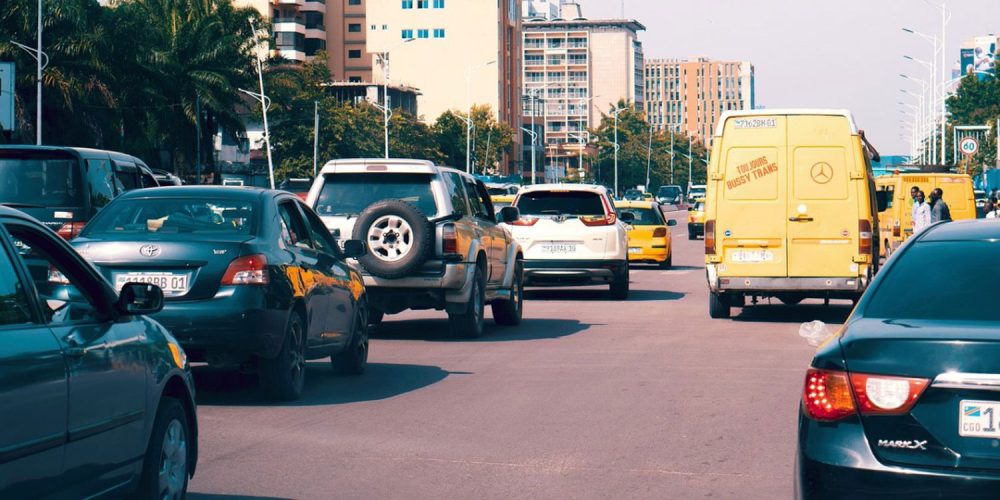
What about driving license in Kinshasa? Is it hard to get one? Why that lack of traffic lights, signs and enforcement in Kinshasa, and the rest of Congo? Is that valid for whole Africa? These are some of the questions that many foreigners may have when they visit or live in Kinshasa, the capital city of the Democratic Republic of Congo. In this blog post, I will try to answer them based on my personal experience and some research.
First of all, let me clarify that I am not a professional driver, nor an expert on traffic laws or regulations. I am just a regular citizen who has been living in Kinshasa for a few years and has learned to adapt to the local driving culture. So please take my opinions with a grain of salt and do your own due diligence before you decide to drive in Kinshasa or anywhere else in Congo.
To drive legally in Kinshasa, you need a valid driving license issued by the Congolese authorities. You can obtain one by passing a theoretical and practical exam at the National Driving School (Ecole Nationale de Conduite, or ENC). The exam costs about 100 USD and takes about two weeks to complete. You also need to have a medical certificate and a criminal record check.
Alternatively, you can convert your foreign driving license into a Congolese one at the Ministry of Transport. This process costs about 150 USD and takes about a month. You need to have your original driving license, a certified translation of it, a copy of your passport, a visa or residence permit, and two passport photos.
However, many people in Kinshasa do not have a driving license at all, or have obtained one through informal channels. According to a 2018 report by the World Health Organization (WHO), only 23% of drivers in Congo had a valid driving license. This is partly due to the high cost and bureaucracy involved in getting one, and partly due to the lack of enforcement and corruption in the traffic police.
Kinshasa is a sprawling city with an estimated population of over 12 million people. It has a chaotic and congested traffic system that is often described as “survival of the fittest”. There are very few traffic lights, signs or markings on the roads. Most intersections are controlled by traffic police officers who use hand signals or whistles to direct the flow of vehicles. However, their presence is not always consistent or reliable. Sometimes they are absent, sometimes they are busy collecting bribes from drivers, and sometimes they cause more confusion than order.
The traffic rules in Kinshasa are mostly unwritten and based on common sense and courtesy. Drivers are expected to yield to pedestrians, cyclists and motorcyclists, as well as to larger vehicles such as buses and trucks. Drivers are also expected to respect the right of way of vehicles coming from the right at roundabouts and junctions. However, these rules are often ignored or violated by impatient or reckless drivers who try to squeeze through any gap or opportunity they see.
The traffic police in Kinshasa have the authority to stop and fine drivers who break the traffic rules or cause accidents. However, they rarely do so unless they witness a serious offense or want to extort money from drivers. Many drivers prefer to negotiate or bribe their way out of trouble rather than pay the official fines or face legal consequences.
The traffic situation in Kinshasa is not unique to Congo. Many other African cities face similar challenges due to rapid urbanization, population growth, poor infrastructure, weak governance and low public awareness. According to the WHO report mentioned above, Africa has the highest road traffic death rate in the world, with 26.6 deaths per 100 000 population in 2016. Congo ranked among the worst performers with 33.2 deaths per 100 000 population.
However, there are also some positive examples of African cities that have improved their traffic management and safety over the years. For instance, Kigali in Rwanda has installed traffic lights and cameras at major intersections and enforced strict penalties for traffic violations. Addis Ababa in Ethiopia has built a light rail system that reduces congestion and pollution in the city center. Lagos in Nigeria has introduced bus rapid transit (BRT) lanes that provide faster and cheaper transport for commuters.
Therefore, it is possible to improve the traffic situation in Kinshasa and other African cities with political will, public investment, technical assistance and social mobilization. It is also important to educate drivers and pedestrians about their rights and responsibilities on the road and to promote a culture of respect and civility among road users.
Leave a Reply